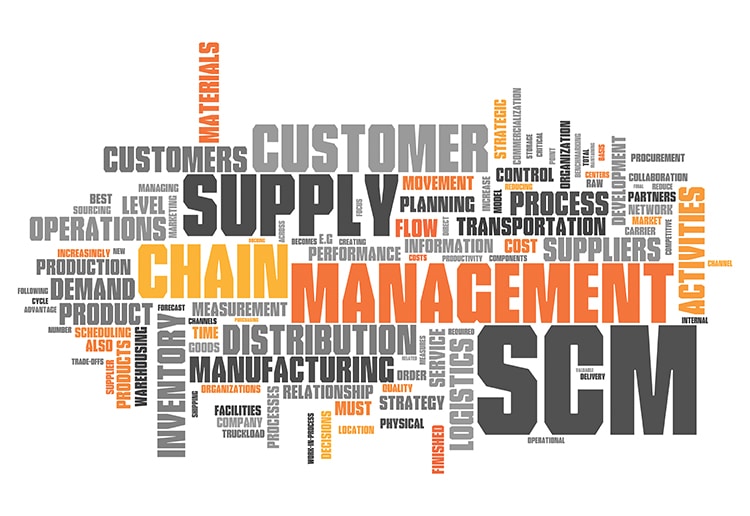By George R. Pilcher, The ChemQuest Group, Inc.
Much has happened since last year, when I last addressed the State of the U.S. Paint and Coatings Industry in the August 2020 issue of CoatingsTech. At that time, I indicated that no one other than the most committed optimist would predict anything better for 2020 than a global economy suffering from a minimum of a 4-7% decrease in the global Gross Domestic Product (GDP), compared with the 2019 pre-COVID-19 prediction of an increase of 2.9%.
Clearly, I was being a bit of a pessimist because, thanks largely to a v-shaped recovery, the global GDP for 2020 declined by only 3.3%, and the U.S. GDP by 3.5%. Estimates for 2021 from the World Bank suggest global GDP growth of 5.6%, and 6.8% for the United States, with China leading the pack at a whopping 8.5%, so recovery is well underway.
This is not to say that things are “back to normal”—not by a long shot. Despite the recovery, global output will still be about 2% below pre-pandemic projections by the end of this year.1 Moreover, at the end of June 2021, the entire supply chain was a mess:
- Production of virtually everything used in manufacturing industries, such as paint and coatings, cannot keep up with demand.
- Shipping costs doubled and, in some cases, tripled; load-to-truck ratios were up anywhere from 400%–1,700% year-over-year, April 2020–April 2021.
- Just as the great ports of the United States were beginning to become less backed up in May, a coronavirus outbreak forced Chinese authorities to shut down parts of Guangdong province, which is home to Yantian, one of the world’s busiest ports and a major gateway for containerized exports. As of late June, the port was only back to 70% capacity operation, with approximately 50 ships backed up, and roughly 350,000 loaded containers stranded on the docks.2
- In April 2019, the price of a common lumber western spruce and fir two-by-four was around $400 for every 1,000 linear board feet. The price rose to approximately four times that amount by late May 2021, hitting just over $1,600 for every 1,000 linear board feet, before dropping to $960 in June.3 Lead times extended to 12 weeks or more, up from only two weeks or less, pre-pandemic.
- As a result of the “Great Freeze” in February 2021 on the Gulf Coast, production across the Permian Basin dropped by an average of more than 2 million barrels/day over three days during the third week in February.4 As of the end of June, we found that a surprising number of products from this area are still subject to force majeure and/or allotment and the supply chain, with individual product exceptions, won’t be fully functional until early in 2022.
- Epoxy resins, for all intents and purposes, are simply not available, a situation that will also not be rectified until early 2022.
- Raw material price increases for a basket of components used to make paints and coatings; adhesives; sealants; caulks; plastics (e.g., ABS, PVC, and acrylic); and similar materials used in construction will increase anywhere from 9% to 20% for 2021, based upon what we are seeing at the end of June.
The dominoes just keep falling. Yes, COVID-19 played its part as one component of what had turned into a “perfect storm,” regarding the North American paint and coatings industry by February 2021, as did the “Great Gulf Freeze,” but the current situation has been a “storm in the making” for the past eight to 10 years.
The only way in which to increase resilience in the supply chain is to create greater visibility across the entire supply network, coupled with greater agility in responding to shifts in the environment.
Rising consumer demand5; historically low mortgage 6; serious problems with insufficient personnel and equipment in the trucking sector7; an extremely high savings rate; high consumer confidence; and other lesser factors have all affected the economy during the past several years to bring us to where we are today.
For this reason, it is an exercise in futility to blame COVID-19, the Gulf Freeze, the shortage of trucks and truck drivers, or any other factor or set of factors alone. The problem is that U.S. industry, in general, has failed to build resilience into its supply chains, and we are now paying the price for the industry’s negligence.
In March of this year, the “American Rescue Plan” placed an additional $1.9 trillion in new stimulus funds into circulation at a time when many experts felt we were on the cusp of a consumer boom. This will only exacerbate the situation for the most prepared of all manufacturing and construction firms, and will potentially wreak havoc on less-prepared producers of raw materials and finished goods, that have failed to build sufficient resilience into their supply chain philosophies and practices.
IS A BOOM GOOD NEWS?
On the surface, a consumer boom sounds like good news, but—upon closer examination—it really bears a mixed message. With consumer spending up, prices tend to rise. People travel more, raising the demand for gasoline, diesel, and jet fuel, leading to shortages and higher prices. With the current low interest rates, an increasing number of millennials will wish to purchase their first homes or “buy up,” leading to an even worse residential home shortage than is currently the case, while driving up housing costs. As a result of the shortages, and resultant price increases, of lumber and other construction materials, the average new home costs about $40,000 more today than it did at this time last year.8
We quickly see a picture forming: a picture in which inflation is increasing; lumber, steel, aluminum, PVC, ABS, epoxy, acrylics, and virtually all other manufacturing and construction raw material costs are rising; and the finished goods made from those raw materials are forced into higher pricing, whether a gallon of paint, a pail of construction adhesive, or a new residential home.
It is a picture in which the already challenged U.S. trucking fleet and driver shortage cannot be addressed soon enough—a picture in which facility shutdowns have exacerbated already existing shortages and lengthened supply lines that were already strained. In short, we have a mess—and we have a mess because the global supply chain is fundamentally lacking resilience, i.e., lacking the capacity to recover from difficulties quickly.
Clearly, changes need to be made in the global supply chain, and they need to be facilitated by those companies that rely upon it not only to remain in business but to flourish. The only way in which to increase resilience in the supply chain is to create greater visibility across the entire supply network, coupled with greater agility in responding to shifts in the environment.
Diversification—of the supplier base, production footprint, and transportation partners—will be increasingly necessary to avoid the pitfalls that we are experiencing in 2021 and contingency planning takes on much greater importance than has heretofore been the case, when such processes were more talked about than implemented.
Those who prefer to see the current, chaotic situation as a direct result of the pandemic, in light of the assumption that “things will return to normal” at some point in the future, have a very rude awakening ahead of them. Those enterprises that understand that the current issues have been developing over a period of many years, and that they will not go away just because COVID-19 does, are already beginning to realize that they need to take a new approach toward spreading their risk—even if it comes at a higher cost.
The crisis of 2020 made clear that the old ways of purchasing will no longer produce optimal results—we have had a powerful light shone on the importance of visibility across the supply chain. Increased data sharing by raw material producers, adhesive manufacturers, lumber suppliers, steel producers, et al., and end-use customers is truly going to be a necessity to avoid the kinds of surprises that are becoming increasingly common, and that wreak havoc with people and systems because they were not anticipated.
Of the nearly 150 executives responding to the Foley & Lardner LLP Global Supply Chain Disruption and Future Strategies Survey,9 70% agreed that, because of the lessons that they have learned from the pandemic, sourcing from the lowest-cost supplier will no longer be the sole focus in making supply decisions. Companies will place greater emphasis on partnering with suppliers that have more resilient and flexible processes to assure continuity of supply.
Sixty-two percent of respondents in this same study agreed that the pandemic will lessen companies’ focus on just-in-time manufacturing models in favor of warehousing and inventory banks for additional protections against shutdowns. Companies will reduce their reliance on single sources for the supply of various materials and components. Where dual sourcing is a viable option, manufacturers can, and should, qualify alternate suppliers with manufacturing operations in different locations.
It’s not pretty, it’s not going away anytime soon, and we won’t see the establishment of the “new normal” until 2022. Isn’t this plenty of incentive for anyone with common sense and a strong survival instinct to begin handling their supply chains differently going forward than they have in the past? Building resilience into the entire process is the only way forward, and it will require that we spend less time being concerned with the lowest price, the fastest delivery, minimum inventory, and the longest payment terms—and more time focusing on visibility, agility, diversification, and contingency planning.
With this in mind, it is time to take a look at an overview of how the U.S. paint and coatings industry performed in 2020, is performing in 2021, and is likely to perform in 2022.
CONTINUE READING IN THE AUGUST 2021 DIGITAL ISSUE OF COATINGSTECH
References
- World Bank. “Global Recovery Strong but Uneven as Many Developing Countries Struggle with the Pandemic’s Lasting Effects,” June 8, 2021. https://www.worldbank.org/en/news/press-release/2021/06/08/world-bank-global-economic-prospects-2021 (accessed on July 5, 2021).
- “Chinese Port Logjam Threatens Christmas Shipping Rush,” Paris, Costas. The Wall Street Journal, June 21, 2021. https://www.wsj.com/articles/chinese-port-logjam-threatens-christmas-shipping-rush-11624307360 (accessed on July 11, 2021).
- Phillips, Matt. “As Lumber Prices Fall, the Threat of Inflation Loses Its Bite,” The New York Times. https://www.nytimes.com/2021/06/21/business/lumber-price.html(accessed July 19, 2021).
- Jacobs, Trent. As Temperatures Rise, U.S. Producers Expected to Recover Rapidly. Journal of Petroleum Technology, Feb 19, 2021. https://jpt.spe.org/as-temperatures-rise-us-producers-expected-to-recover-rapidly (accessed May 13, 2021).
- Trading Economics: U.S. Bureau of Economic Analysis. https://tradingeconomics.com/united-states/consumers-pending (accessed May 13, 2021).
- Trading Economics: Mortgage Bankers Association of America. https://tradingeconomics.com/united-states/mortgage-rate (accessed Feb 26, 2021).
- Huff, Aaron. Driver Shortage Credited for Buoying Freight Economy in 2020 and Likely into 2021. Commercial Carrier Journal, Nov 11, 2020.
- Ratzlaff, Brady. “Lumber Industry and Home Building Materials Seeing a Drastic Increase in Price, Shortages.” Global News. April 30, 2021. https://globalnews.ca/news/7751206/lumber-industry-home-building-increase-price-shortages/ (accessed May 13, 2021).
- Uetz, A.M.; Kalyvas, J.; Miller, V.; Wegrzyn, K. Global Supply Chain Disruption and Future Strategies Survey Report, September 2020. Foley & Lardner LLP website. https://www.foley.com/-/media/files/insights/publications/2020/09/foley-2020-supply-chain-survey-report-1.pdf(accessed May 13, 2021).
- Federal Reserve Bank of Atlanta. www.atlantafed.org (accessed on July 10, 2021).
- Ferraris, Vittoria. “Global Auto Sales Forecast: The Recovery Gears Up,” S & P Global website. https://www.spglobal.com/ratings/en/research/articles/210511-global-auto-sales-forecasts-the-recovery-gears-up-11952032 (accessed July 19, 2021).
CoatingsTech August 2021 | vol. 18, no. 8
